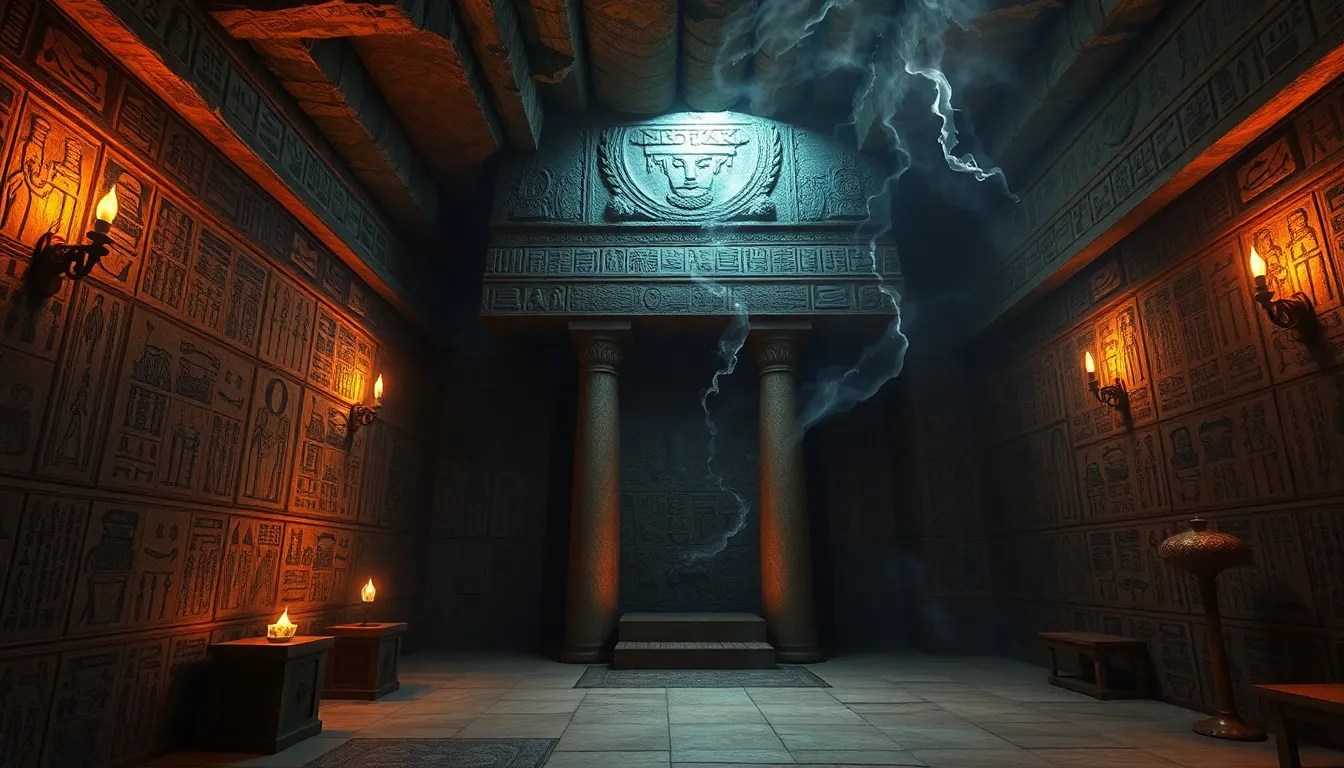Unveiling the Secrets of the Tomb Texts
I. Introduction to Tomb Texts
Tomb texts are a fascinating aspect of ancient Egyptian culture that provide insights into their beliefs about the afterlife and the spiritual journey of the deceased. These texts were inscribed on the walls of tombs, coffins, and other funerary objects, serving both a decorative and a functional purpose. They hold profound significance, as they reflect the Egyptians’ understanding of death, morality, and the divine.
The historical context surrounding tomb texts is rich and varied. These writings date back to the Old Kingdom, around 2500 BCE, and evolved significantly through the centuries, adapting to changing religious beliefs and cultural practices. The discovery of tomb texts in the 19th and 20th centuries has opened a window into the spiritual life of ancient Egyptians, revealing their complexities and nuances.
II. The Historical Background of Tomb Texts
The origins of tomb texts can be traced to the early dynastic period when the first hieroglyphic inscriptions began to appear. As Egyptian society evolved, so did their funerary texts. The historical development can be categorized into three main phases:
- Pyramid Texts: These are the oldest religious texts in the world, found in the pyramids of the Old Kingdom. They were primarily reserved for royalty and included spells and incantations aimed at protecting the deceased in the afterlife.
- Coffin Texts: Emerging in the Middle Kingdom, these texts expanded the accessibility of funerary magic to non-royalty, inscribed on coffins and tomb walls to aid the deceased’s journey.
- Book of the Dead: This compilation of spells and prayers became prevalent in the New Kingdom, designed to guide the deceased through the afterlife and into the presence of the gods.
Key archaeological discoveries, such as the tomb of Tutankhamun and the pyramids of Giza, have revealed a wealth of tomb texts that continue to be studied and interpreted by Egyptologists today.
III. Types of Tomb Texts
The texts found in tombs can be classified into several types, each with its unique characteristics:
- Hieroglyphs: The intricate writing system of ancient Egypt, hieroglyphs were used to convey sacred texts and messages. Each symbol represented sounds or ideas, and their meanings were often layered and complex.
- Pyramid Texts: These texts, found in royal pyramids, contain spells meant to ensure the pharaoh’s safe passage to the afterlife and his resurrection as a god.
- Coffin Texts: This collection of spells included more accessible texts for the elite, promoting the idea that anyone could attain a favorable afterlife.
- Book of the Dead: A collection of spells and guidelines for the deceased, the Book of the Dead provided a roadmap for navigating the challenges of the afterlife.
While each type of text served distinct purposes, they share common themes of protection, guidance, and spiritual significance.
IV. Purpose and Function of Tomb Texts
The primary purpose of tomb texts was to serve as a guide for the deceased in the afterlife. They held immense religious and spiritual significance, as they were believed to facilitate the deceased’s journey through the underworld and ultimately to the judgment before Osiris, the god of the afterlife.
Key functions of tomb texts include:
- Guidance for the Afterlife: The texts contained spells that provided instructions and knowledge necessary for navigating the afterlife.
- Protection Against Dangers: Many spells aimed to protect the deceased from malevolent forces and obstacles encountered in the afterlife.
- Role in Funerary Practices: Tomb texts were integral to funerary rituals, often recited by priests during ceremonies to ensure the safe passage of the deceased.
V. Key Themes and Motifs in Tomb Texts
Tomb texts are rich in themes that reflect the ancient Egyptians’ understanding of life, death, and the cosmos:
- The Journey to the Afterlife: A recurring theme, the texts describe the trials faced by the deceased on their journey to the afterlife, emphasizing the importance of preparation and knowledge.
- Deities and Cosmology: The texts often invoke various gods, outlining their roles in the afterlife and the relationship between the deities and the deceased.
- Moral and Ethical Teachings: Many tomb texts include admonitions about living a good life and the consequences of one’s actions, reflecting the ancient Egyptians’ values and beliefs.
VI. Interpretation and Translation Challenges
Translating and interpreting tomb texts presents unique challenges due to the linguistic complexities of the ancient Egyptian language. The hieroglyphic script can be intricate, with various symbols representing different sounds and meanings.
Modern scholars employ various approaches and technologies to decipher these texts, including:
- Comparative Linguistics: Studying similarities between ancient Egyptian and related languages to enhance understanding.
- Digital Tools: Utilizing software and databases to analyze and visualize hieroglyphic inscriptions.
- Notable Translations: Scholars like E.A. Wallis Budge and Richard H. Wilkinson have made significant contributions to the translation and interpretation of these ancient texts.
VII. The Cultural Impact of Tomb Texts
The influence of tomb texts extends beyond academia, shaping modern understandings of ancient Egyptian beliefs and practices. Their representation in various forms of art, literature, and popular culture has further solidified their importance in contemporary society:
- Modern Understanding: Tomb texts provide a lens through which we can appreciate ancient Egyptian spirituality and ethics.
- Representation in Art and Literature: Tomb texts have inspired countless works of art, films, and novels, reflecting the enduring fascination with ancient Egypt.
- Ongoing Research: The field of Egyptology continues to evolve, with new discoveries and interpretations shedding light on these ancient writings.
VIII. Conclusion
In summary, tomb texts are a crucial component of ancient Egyptian culture, offering invaluable insights into their beliefs about the afterlife and the spiritual journey. Through the study of these texts, we gain a deeper understanding of the values and practices that shaped one of history’s most remarkable civilizations.
As research in this field continues to advance, future explorations promise to uncover even more secrets held within the tomb texts, enriching our knowledge of ancient Egypt and its enduring legacy.
